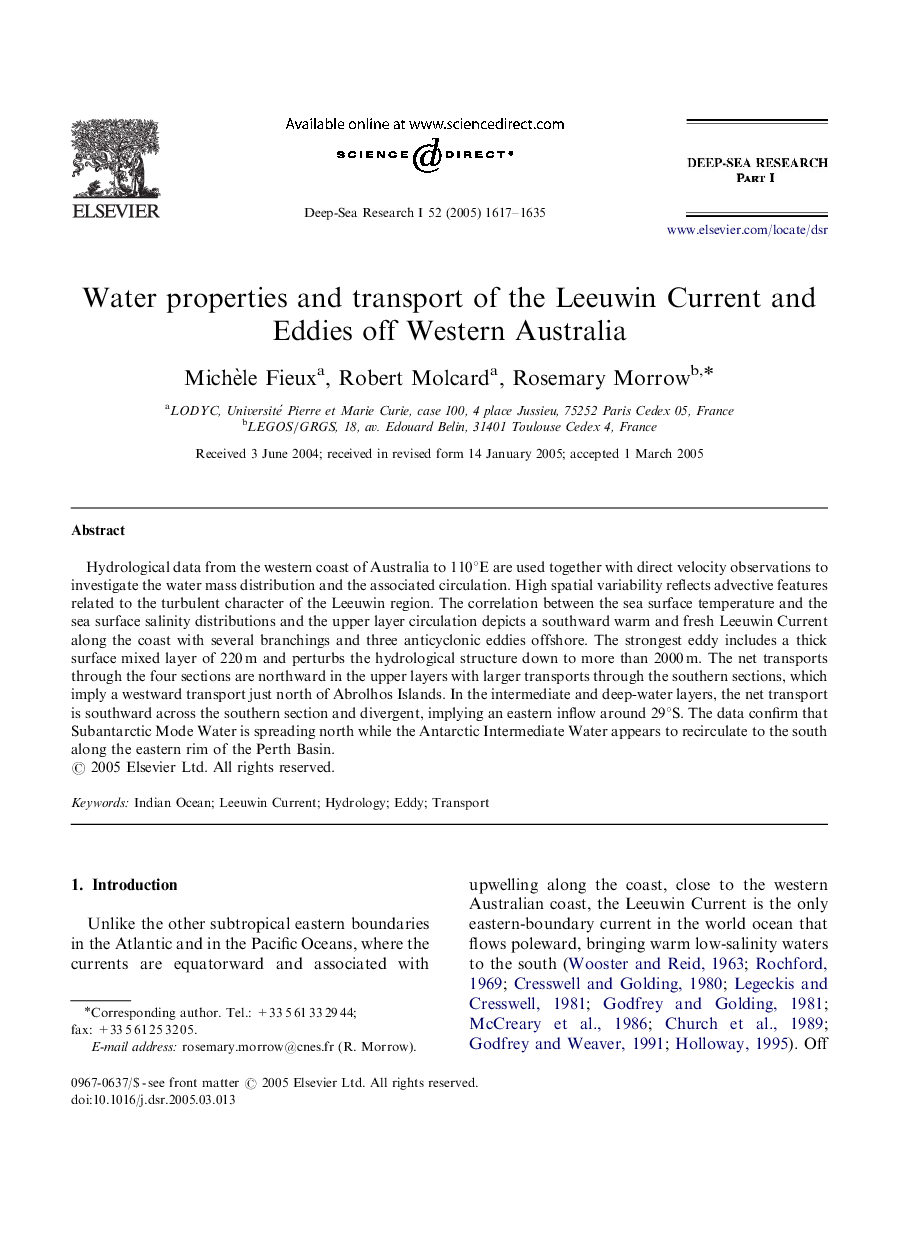| Article ID | Journal | Published Year | Pages | File Type |
|---|---|---|---|---|
| 9479765 | Deep Sea Research Part I: Oceanographic Research Papers | 2005 | 19 Pages |
Abstract
Hydrological data from the western coast of Australia to 110°E are used together with direct velocity observations to investigate the water mass distribution and the associated circulation. High spatial variability reflects advective features related to the turbulent character of the Leeuwin region. The correlation between the sea surface temperature and the sea surface salinity distributions and the upper layer circulation depicts a southward warm and fresh Leeuwin Current along the coast with several branchings and three anticyclonic eddies offshore. The strongest eddy includes a thick surface mixed layer of 220 m and perturbs the hydrological structure down to more than 2000 m. The net transports through the four sections are northward in the upper layers with larger transports through the southern sections, which imply a westward transport just north of Abrolhos Islands. In the intermediate and deep-water layers, the net transport is southward across the southern section and divergent, implying an eastern inflow around 29°S. The data confirm that Subantarctic Mode Water is spreading north while the Antarctic Intermediate Water appears to recirculate to the south along the eastern rim of the Perth Basin.
Related Topics
Physical Sciences and Engineering
Earth and Planetary Sciences
Geology
Authors
Michèle Fieux, Robert Molcard, Rosemary Morrow,
